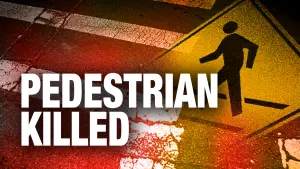More Stories
Police and government leaders are trying to focus on exactly why children keep getting hit by cars in one certain part of Rockland County - and come up with ways to fix it.
As News 12 reported on Monday, a fifth child was hit in the immediate area in the last five months.
Police said a 15-year-old injured in the crash at Route 59 and South Cole Avenue in Spring Valley Monday evening is in stable but serious condition at the hospital.
Previously, there had been four crashes this year involving children in the area.
Two accidents in January resulted in the deaths of an 8-year-old and a 5-year-old.
"We gotta be more safe and careful with the kids and stuff," driver Tyquan Foster said.
"Kids run across the street," village resident Ronnie Allen said. "They're not looking out for cars, nothing like that."
Many Spring Valley residents said the children need traffic safety education.
Urban design expert Elissa Kyle, of Vision Long Island, told News 12 in a Zoom interview Tuesday that educational campaigns are usually not the whole solution to recurring accidents in a growing community because "kids don't have that impulse control like adults do."
Kyle helps local governments in the New York City area foster responsible growth.
She said curb extensions that make streets seem narrower, raised crosswalks and even traffic limitations in the hours just after school can all calm traffic and lessn the chances of serious accidents.
She said education is only so effective.
"You have to design assuming that sometimes a kid is going to do something a kid's not supposed to do," she said. "If it only works when everyone is observing every rule 100 percent of the time, then it's never going to work because that situation will never happen."
Ramapo Town Supervisor Michael Specht previously said his office would be looking into why these accidents keep happening in the same area.
Specht declined to comment for this story.
Spring Valley officials were not immediately available to discuss what solutions they are considering.
Kyle mentioned that there are a lot of federal funds available to local governments for projects to make streets safer, especially through the recent bipartisan infrastructure deal, and suggests up-and-coming communities go after that government money.
More from News 12
2:09

STORM WATCH: Heavy rain, damaging wind, record warm temps on Friday
0:25

Bronx man convicted in assault on MTA officer at Croton-Harmon station
0:24

Pedestrian killed in early morning collision on Thruway in Rockland County
1:44

Pope names fellow Chicagoan, Bishop Ronald Hicks, as new archbishop of New York
2:48

Court mix-up ensues in case of Peekskill man involved in violent interaction with police
0:27
